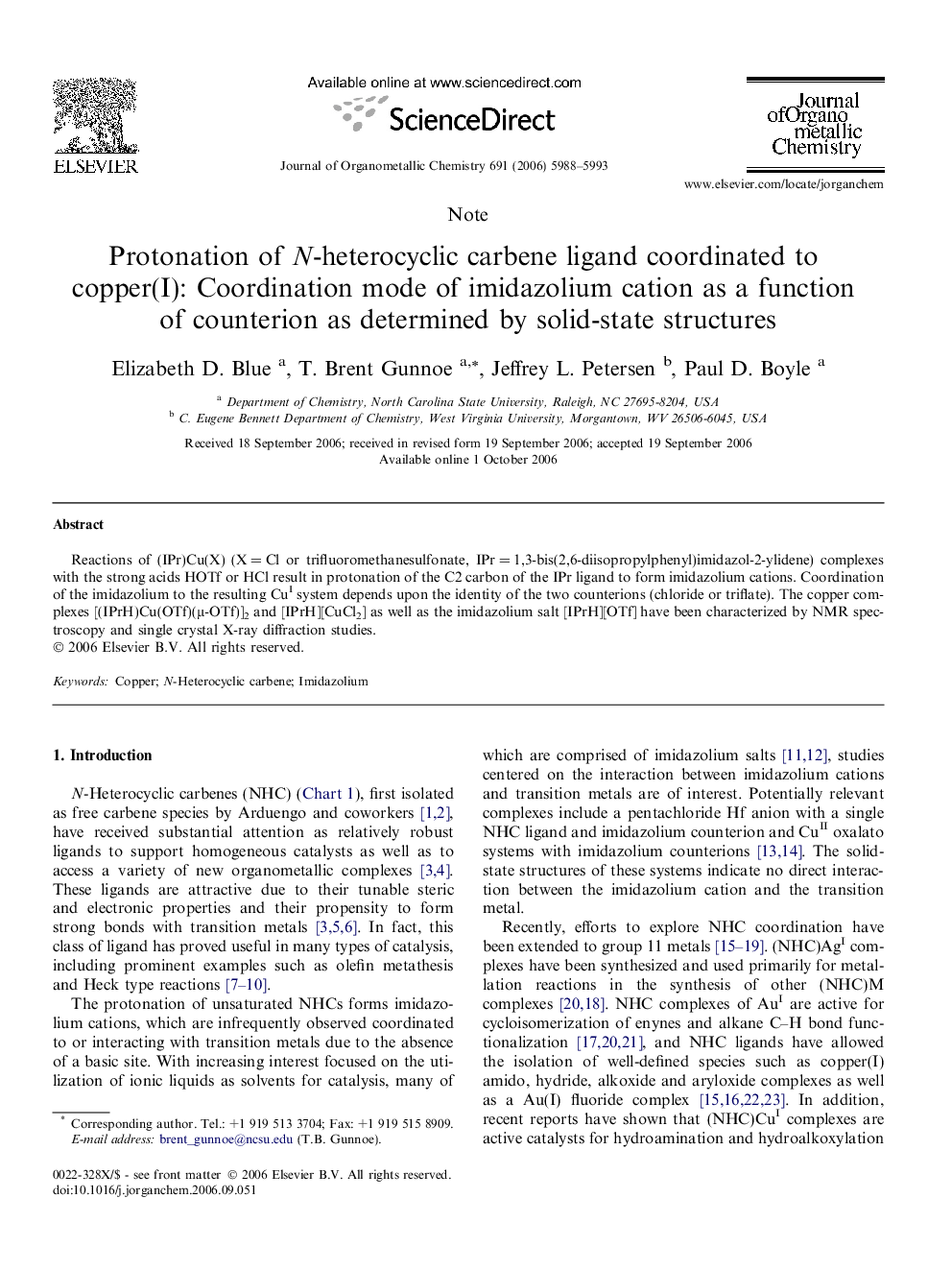| Article ID | Journal | Published Year | Pages | File Type |
|---|---|---|---|---|
| 1328429 | Journal of Organometallic Chemistry | 2006 | 6 Pages |
Reactions of (IPr)Cu(X) (X = Cl or trifluoromethanesulfonate, IPr = 1,3-bis(2,6-diisopropylphenyl)imidazol-2-ylidene) complexes with the strong acids HOTf or HCl result in protonation of the C2 carbon of the IPr ligand to form imidazolium cations. Coordination of the imidazolium to the resulting CuI system depends upon the identity of the two counterions (chloride or triflate). The copper complexes [(IPrH)Cu(OTf)(μ-OTf)]2 and [IPrH][CuCl2] as well as the imidazolium salt [IPrH][OTf] have been characterized by NMR spectroscopy and single crystal X-ray diffraction studies.
Graphical abstractReactions of (IPr)Cu(X) (X = Cl or OTf, IPr = 1,3-bis(2,6-diisopropylphenyl)imidazol-2-ylidene) complexes with HOTf or HCl results in protonation of C2 of IPr to form an imidazolium cation. The coordination mode of the imidazolium depends upon the counterions. Complexes [(IPrH)Cu(OTf)(μ-OTf)]2 and [IPrH][CuCl2] have been fully characterized including solid-state structures.Figure optionsDownload full-size imageDownload as PowerPoint slide
